
The past year is one for TomTom’s history books. Delivering several firsts, the company is releasing new products, pushing its technology forward with the latest innovations. And it’s playing a central role in shaping the commercial mapping and location tech industry for good. With the year ending, let’s take a look at some of the milestones and trends from the past year and consider what’s on the horizon before TomTom returns with a bang at CES2024 in January.
AI is the talk of every town
Interest and buzz in Artificial Intelligence (AI) have never been higher interest in the tech began to explode in November 2022 and has continued growing over the course of this year.
One specific type of AI is driving the tech zeitgeist of 2023 — Generative AI (GenAI). The result of advancements in large language models, Generative AI is ushering in the next wave of innovation in tech in both products and productivity — with OpenAI’s ChatGPT and Dall. E models leading the charge.
“Yu Guo
Advanced Technology Innovations at TomTom
TomTom’s own Advanced Technology Innovations (ATI) department, a team of experts tasked with the exploration and development of cutting-edge technologies, is already deep into its exploration of GenAI.
Earlier this year, TomTom became the first mapmaker and location technology company to release a plugin for ChatGPT. When users of the LLM ask complex questions about locations and navigation, ChatGPT can generate detailed location-informed responses that include turn-by-turn directions and maps. For the technical behind the scenes on that, check out this article written by Ivan Diaz, a member of TomTom’s Advanced Technology Innovations team.
New AI-powered in-car interfaces
Alongside this, the company is also developing an AI, LLM-powered driving assistant and is demoing it at CES2024. TomTom is no stranger to building in-vehicle tech, but its new AI assistant is something entirely new, if you’ve ever dreamed of being able to talk to your car as if it were KITT, your dream might soon be reality.
Gianluca Brugnoli, TomTom’s VP of Design, leads the company’s UX design team and has a keen eye for in-vehicle user interfaces. He believes that Generative AI-powered voice assistants will be the next revolutionary tech for in-vehicle experiences.
“Generative AI is going to add an emotional layer to interaction with the car,” he says. “It will also help personalize the experience of the vehicle and creative adaptive experiences based on the vehicle’s knowledge of its surroundings and the emotional state of you [the driver].”
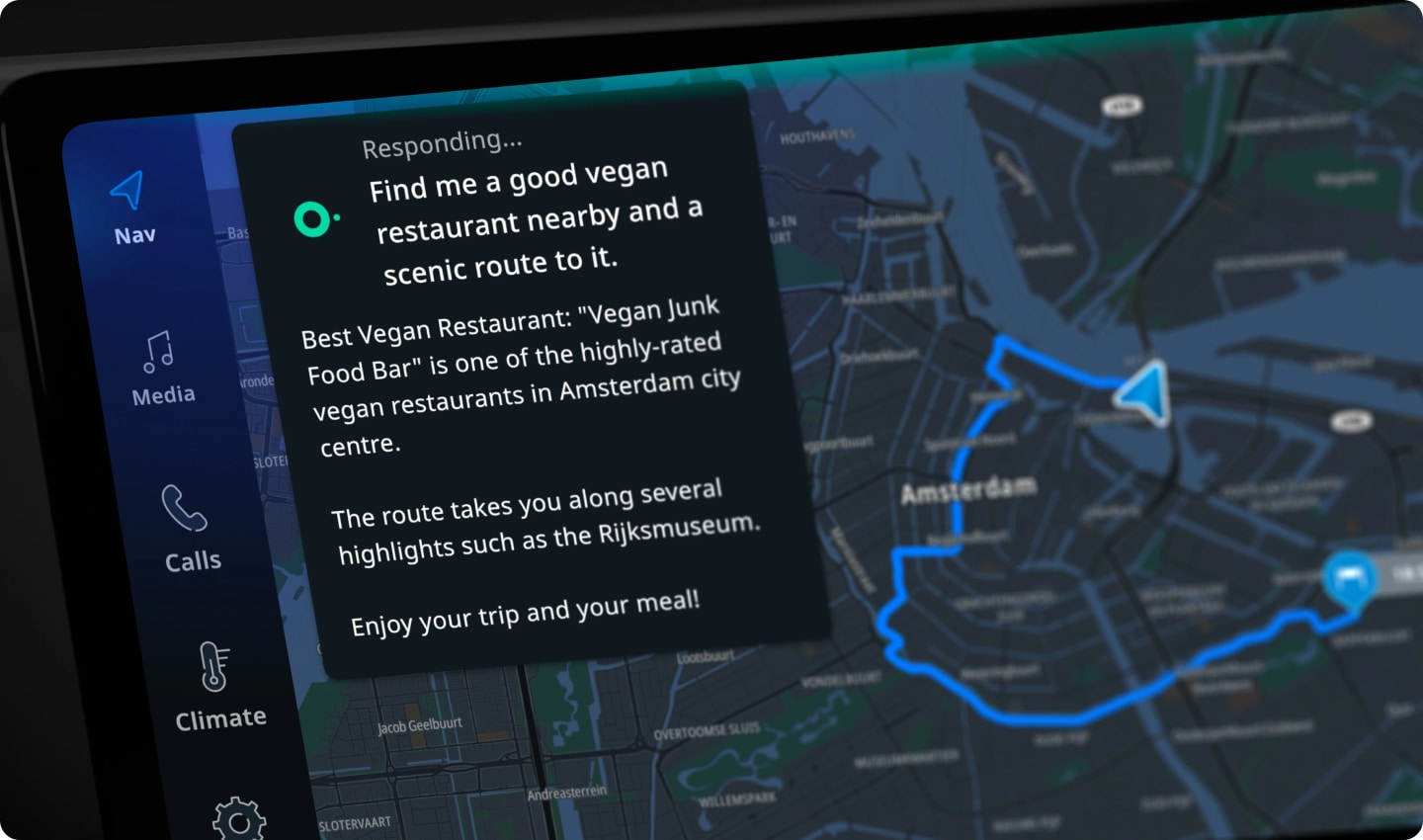 TomTom's AI voice assistant for cars, is able to comprehend complex requests, such as finding a restaurant and navigating there via the scenic route.
TomTom's AI voice assistant for cars, is able to comprehend complex requests, such as finding a restaurant and navigating there via the scenic route.“It will know where you’re driving, your physical and will adapt the driving experience and the technology in the cabin to match the experience each driver seeks.”
Navigation systems and personal navigation devices were the last piece of technology that truly changed the way everyone drives, Brugnoli says. The next will be Generative AI-powered experiences in the car.
If you want to read more about TomTom’s journey with AI over the past year, check out this article over on the Engineering Blog.
Traffic: A constant in our cities
Managing traffic is like making maps, it’s never finished. So long as there is a world and there are people, there will always be maps and there will always be traffic.
When it comes to traffic, the main challenge is one of sustainability, Ralf-Peter Schäfer, TomTom’s VP Product Management of Traffic, Travel and Routing, says.
Nearly a year ago, TomTom released its annual traffic index, as it does at the start of every year, and it uncovered that rush hours had returned.
For a while after the COVID-19 pandemic, the world saw a sustained drop in rush hour traffic compared to pre-pandemic levels — spurred on by work from home mandates and continued by widely adopted hybrid working models. But that changed in 2023.
The next TomTom Traffic Index will cast light on whether this trend will continue or if it was just a minor blip in our return to work after the pandemic.
Constantly changing cities
As traffic rages on, we’re witnessing our cities evolve and adapt — changes to infrastructure are seeking to increase road safety, reduce emissions and reduce congestion. Schäfer says, “[These changes are] about the heart of the city and giving space back to other modes of transport, giving space back to people and not turning city centers into parking lots.”
One example is how many cities are lowering their speed limits. Back in 2021, Paris lowered its speed limit from 30 mph (50 kmph) to 20 mph (30 kmph) and is now looking at reducing the speed limit on its outer ring road. This year, other cities began to follow suit.
In September, Wales introduced default 20 mph (30 kmph) speed limits on roads across the country. Amsterdam in the Netherlands also reduced the speed limit, on around 80% of its roads, from 50 kmph (30 mph) to 30 kmph (20 mph).
The United Nations (UN) has long called for cities around the world to adopt 20 mph (30kmph) as the default speed limit in places where pedestrians, cyclists and motorists mix.
Naturally, there is some resistance to the change. Drivers claim that their journeys are longer and traffic jams are more common making traffic flow worse. However, numbers from TomTom analyzed by public health data body Agilysis show the impact in Wales is minimal — journeys got on average just 45 seconds longer.
Much of the world still has to catch up, but it seems lowered speed limits and multi-modal transport in our cities will become the norm. According to Schäfer, “We must encourage multi-modal travel to ease congestion and increase safety and balance space in our cities.”
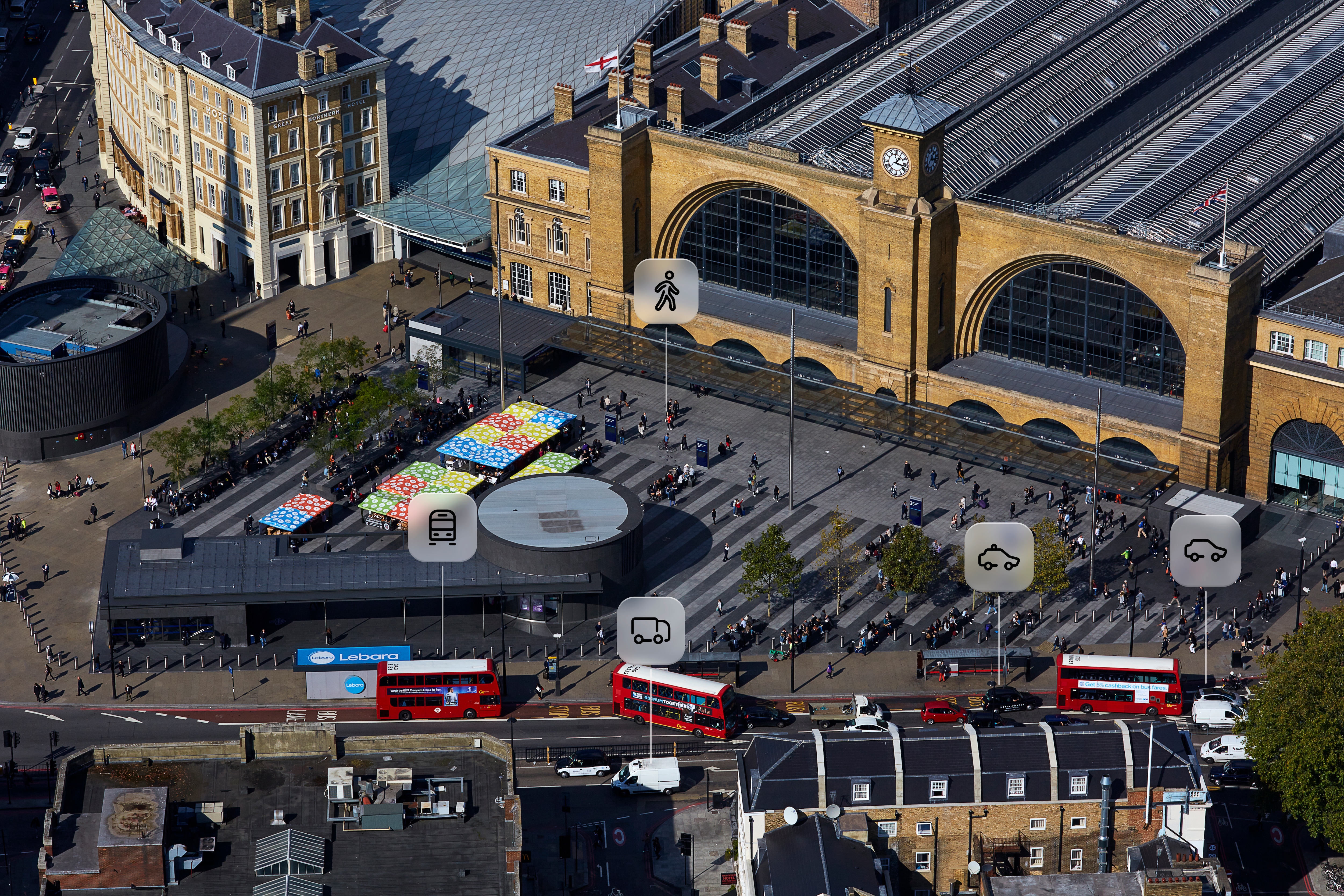 Multi-modal travel is often seen at large interchanges, like London's King's Cross Station. People travel by train, bike, bus, taxi and walk in between.
Multi-modal travel is often seen at large interchanges, like London's King's Cross Station. People travel by train, bike, bus, taxi and walk in between.Everything electric
At all the EV and car shows TomTom attended this year, there was a common trend: Chinese electric car brands have arrived, especially in Europe. At Fully Charged Europe many of the vehicles on show were from China-based EV makers, including BYD, Zeekr, NIO and the SAIC-owned MG.
Drew Meehan, TomTom’s Senior Product Manager for Electric Vehicles, explains the reason for this, “Chinese OEMs are meeting customer demands much better than traditional OEMs, in experience, design and price. Making it hard for traditional brands to compete.”
As this goes on in Europe, on the other side of the Atlantic American marque Tesla is making an impact with its charging standard. Towards the end of 2022, Tesla opened its charging standard allowing other EV makers to use it on their vehicles, in principle giving them access to Tesla’s Supercharger network too. It also allows EV charging providers to add the connector to non-Supercharger devices, meaning Tesla drivers can fast-charge at more locations without the need for a connection converter.
Known as NACS (North American Charging Standard), the connector is the most prevalent EV charger across North America, according to Tesla. MotorTrend reports that cars from the likes of BMW Group, Ford, General Motors, Genesis, Hyundai, Kida, Lucid, Rivian, Volvo and Volkswagen Group, among others, will adopt the NACS connector. And its adoption as a standard “is an admission that public charging networks have fundamentally failed at delivering what EV customers need in the North American market,” Meehan says.
Even so, its adoption could spell the beginning of the end for charging woes in the U.S., Canada and Mexico, so it’s very much a Good Thing for drivers. Will we see something similar happen in Europe, like the USB-C charging on smartphones mandate? We’ll have to wait and see.
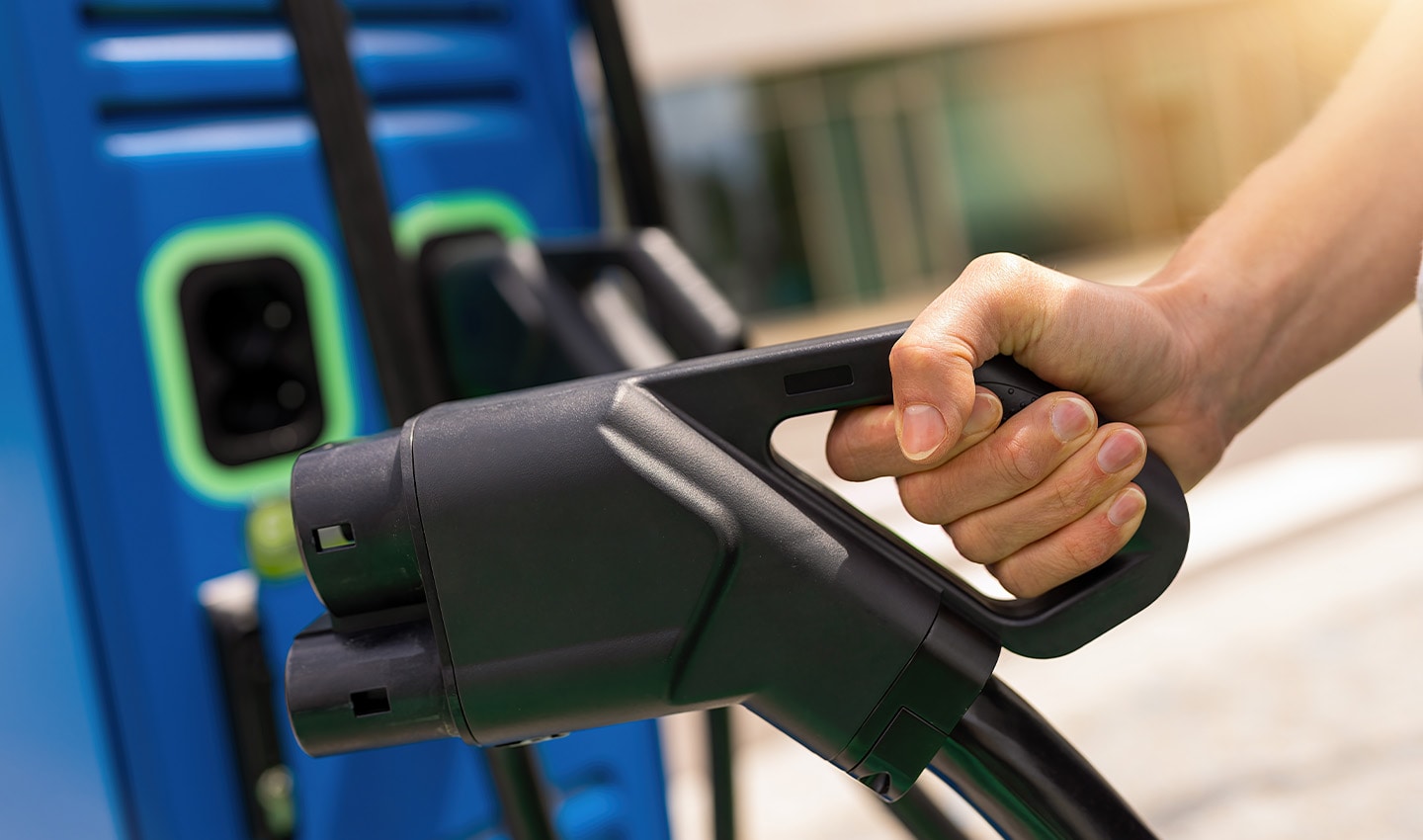 Large CCS style chargers like this could become a rarer site in North America as the NACS charging standard takes off.
Large CCS style chargers like this could become a rarer site in North America as the NACS charging standard takes off.
Momentary woes for EVs as consumers await a better ownership experience
Back in 2021, we wrote about The year of the EV. At the time, it seemed that nothing would stop the transition to electric vehicles, however, this year the road to electrification has been a bit rockier.
Reports stated that EV demand in Europe was slowing as customers held out for more affordable electric cars, like those from China. Reports also stated that soaring insurance costs were likely to cripple EV car sales in Europe. One stark headline from The Information says the EV industry is facing The Valley of Death.
However, Meehan counters the claims that the EV industry is failing or faltering, saying, “The death of the EV has been greatly exaggerated. The outlook is much more positive.”
“This year EVs became a target of a lot of misinformation and fear, uncertainty and doubt, including headlines that they’re not selling, even though sales are way up. The reality is traditional OEMs might not be delivering what customers want, but others [Chinese brands] are rushing to fill that gap, and things are still moving forward very well.”
By the sounds of it, this should be nothing but a minor wobble in the modern history of electric cars. Meehan is resolute that electric vehicles, charging and supporting tech from the likes of TomTom, are all coming together at a great pace to improve the experience of owning and driving an electric car.
Fleets face new worlds
The world of fleet and logistics faces similar electrification challenges and is under mounting pressure to electrify or greenify its operations to reduce emissions and environmental impact. Alongside this, fleet and logistics companies are still adapting to a world changed by the pandemic, one with increased online shopping, modified work habits and new delivery pressures.
“Delivery companies, last-mile companies especially, are taking a serious look at electrification. They’re also doing a lot of work to understand the environmental impact they have. At TomTom, we’ve had several requests to help fleets measure and report the CO2 their vehicles are creating in real time,” Julija Babre, Senior Product Marketing Manager says.
“Using maps and location data we can help fleets do this. As the need to understand environmental impact grows, maps are going to play a much bigger role for fleets, beyond just navigation,” she adds.
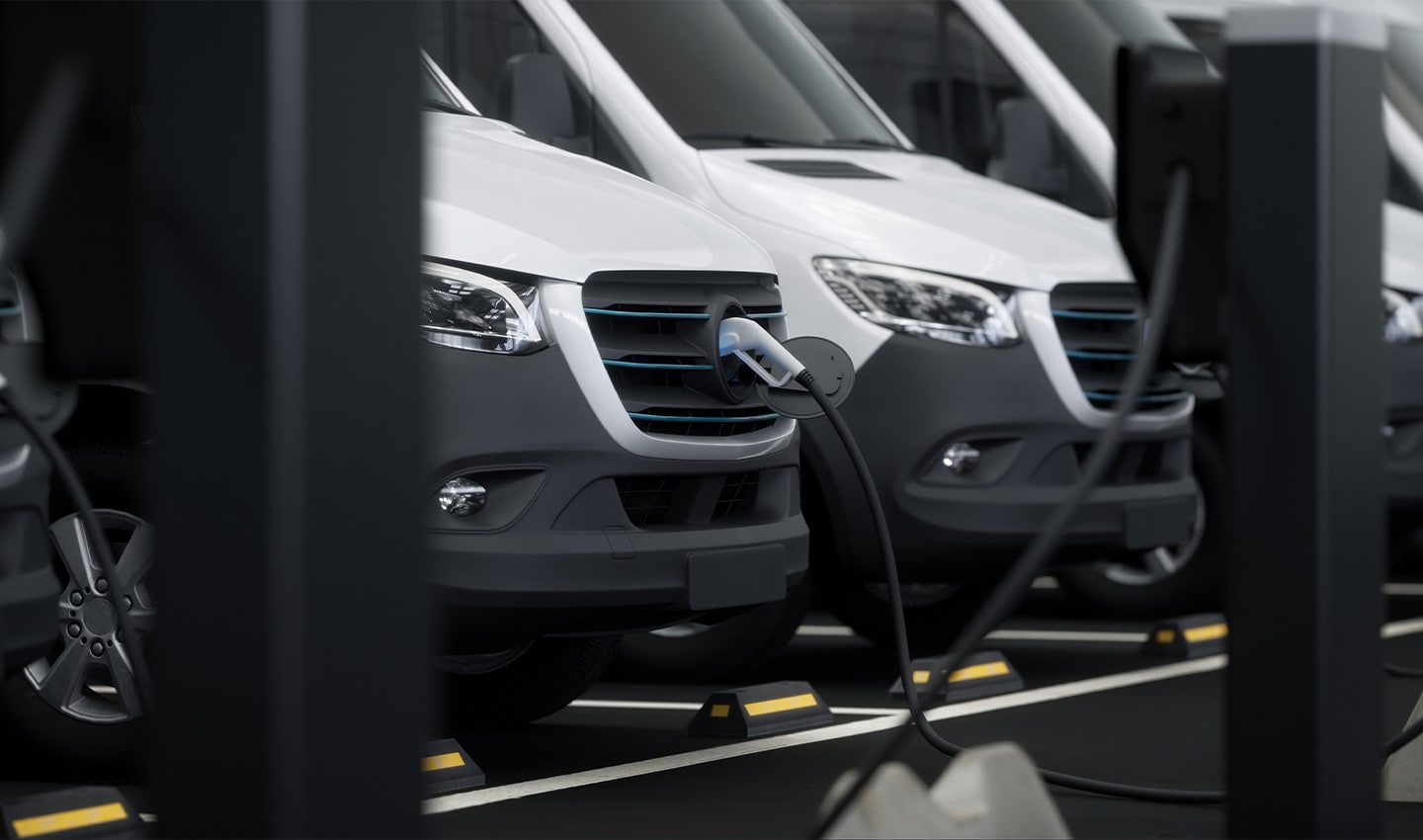 Electric vans are well suited to the needs of fleet operators, more than electric trucks. EV fleets can charge overnight ready for the day's work ahead.
Electric vans are well suited to the needs of fleet operators, more than electric trucks. EV fleets can charge overnight ready for the day's work ahead.It might be a few more years before we see electric long-haul trucks though. The challenge of electrifying a truck to drive long distances at a time is more complex than using electric cars, vans or bikes for last-mile deliveries and just switching out your fleet. In most cases, last-mile EVs can complete their route without needing to charge, instead charging overnight to ready the vehicle for the following day.
“Last-mile deliveries are fast going electric. Fleets are using bicycles and two-wheeled transport to reduce emissions, but they are electrifying their bigger vehicles too, even faster than long-haul delivery, because infrastructure and vehicle availability is much more developed,” Babre says.
A quick web search returns heaps of information, webinars and whitepapers about fleet electrification. It’s a regular topic at events like Fully Charged and the London EV Show — both of which TomTom attended in 2023. And we’re already seeing movements and the sign of things to come with iconic organizations like the UK’s Royal Mail and the Netherlands’ PostNL buying into electric vehicle fleets for their local delivery routes.
Fleets are well on their way to going electric, 2024 could be the year it really takes off.
Open data and collaboration is the future of mapmaking
A little over a year ago, TomTom announced its new maps and maps platform, TomTom Orbis Maps. Since then, it has been making solid progress and is testing it in the wild. TomTom’s new map isn’t just a standalone piece of tech, it’s part of a much bigger industry shift, one that the mapmaking company is playing a central role in defining — a shift towards openness and open map data in commercial mapmaking and location tech.
Around the same time TomTom announced its Orbis Maps, the company was unveiled alongside Meta, AWS (Amazon Web Services) and Microsoft as one of the co-founders of the Overture Foundation, a project that’s aiming to make map data open and interoperable. Under the Linux Foundation it’s also setting out to ensure that data is built on a consistent, and collectively designed map data schema.
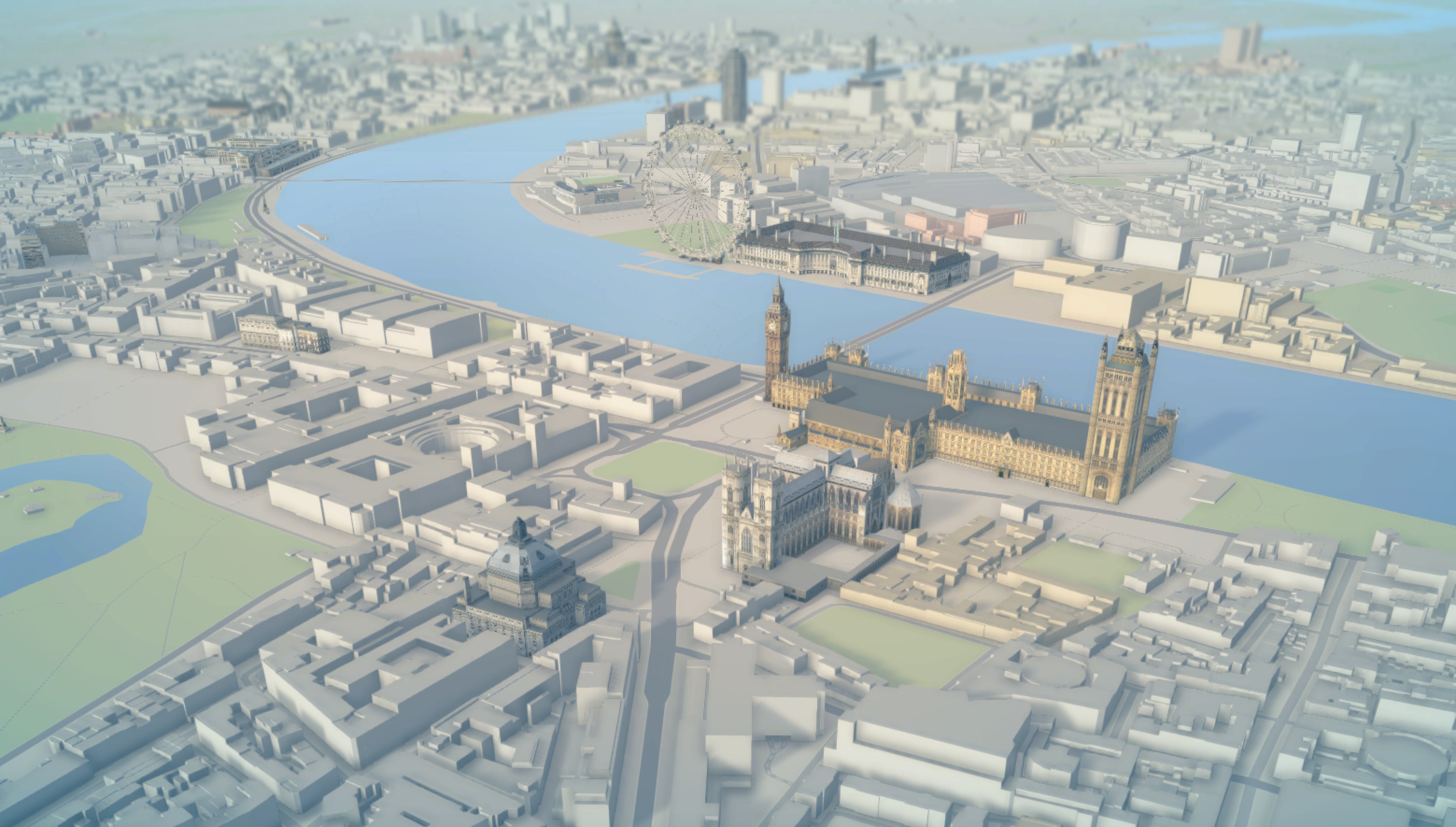 TomTom's new Orbis Maps is delivering immense detail, including 3D buildings and landmarks. It doesn't take much guessing what city is being shown here.Willem Strijbosch, TomTom’s VP Product for Maps, says, “This year ‘open’ was the clear trend. Overture Foundation membership has exploded, and the Overture Foundation is fast becoming the darling of the Linux Foundation as its biggest and most ambitious open data project.”The aim of the game for the Overture Foundation is to make it easier and quicker to work with map data. By making data open and standardized, ensuring everyone is singing from the same hymn sheet, harmony will follow. And harmony is something the industry is looking for.Many companies that build with map data today have the develop and maintain their own map stacks. They must balance data from disparate sources that all reference different base maps and somehow, make it all work. It takes a lot of work. The Overture Foundation and TomTom Orbis Maps are setting out to change that.
TomTom's new Orbis Maps is delivering immense detail, including 3D buildings and landmarks. It doesn't take much guessing what city is being shown here.Willem Strijbosch, TomTom’s VP Product for Maps, says, “This year ‘open’ was the clear trend. Overture Foundation membership has exploded, and the Overture Foundation is fast becoming the darling of the Linux Foundation as its biggest and most ambitious open data project.”The aim of the game for the Overture Foundation is to make it easier and quicker to work with map data. By making data open and standardized, ensuring everyone is singing from the same hymn sheet, harmony will follow. And harmony is something the industry is looking for.Many companies that build with map data today have the develop and maintain their own map stacks. They must balance data from disparate sources that all reference different base maps and somehow, make it all work. It takes a lot of work. The Overture Foundation and TomTom Orbis Maps are setting out to change that.Strijbosch is understandably excited and he’s confident that TomTom’s Orbis Maps “is going to take the world by storm.”
People also read
)
How TomTom turns open data into the Overture transportation layer: Road Sectioning
)
TomTom, Amazon Web Services, Meta and Microsoft join forces and launch open map data foundation
)
Inside TomTom’s EV vision: What’s a mapmaker got to do with electric vehicles?
)
Super sources will power the 'freshest map on the planet.' But what are they?
* Required field. By submitting your contact details to TomTom, you agree that we can contact you about marketing offers, newsletters, or to invite you to webinars and events. We could further personalize the content that you receive via cookies. You can unsubscribe at any time by the link included in our emails. Review our privacy policy. You can also browse our newsletter archive here.
)